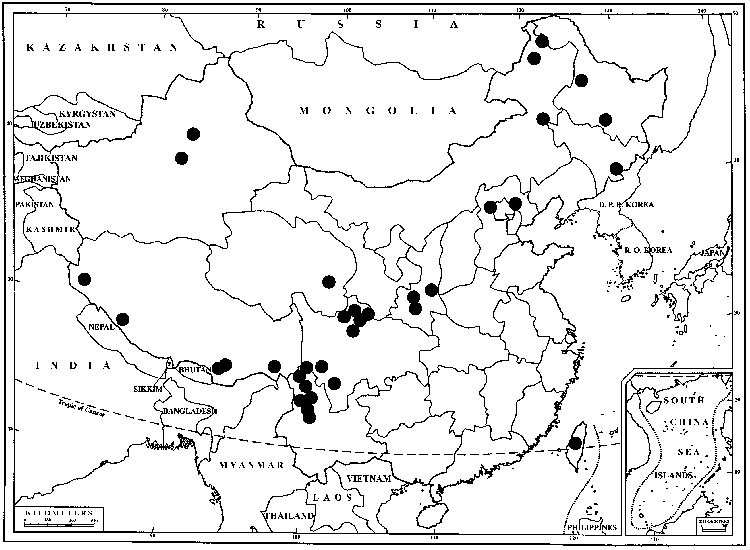Encalypta ciliata
Sp. Musc. Frond., 61. 1801,.
Stems to 20 mm, central strand absent. Leaves oblong to elliptic, 4–6 mm, apices broadly acute to rounded, mucronate to cuspidate, margins recurved below midleaf; costa excurrent or subpercurrent, narrow; laminal cells 10–20 µm,; basal-cells rectangular, 50–120 µm, smooth; basal marginal cells weakly differentiated below, in 4–8 rows, elongate, smooth. Specialized asexual reproduction absent. Seta 4–14 mm, yellow to yellowish-brown. Capsule cylindric, 2–3 mm, smooth, constricted below mouth, yellowish-brown, exothecial cells rectangular, 50–120 µm; peristome single, yellowish red to hyaline, 16 teeth, lanceolate, to 0.3 mm high, papillose, erect; operculum 1–1.5 mm. Calyptra 3–7 mm, fringed at base, smooth or rarely papillose at apex. Spores 30–40 µm, plicae and pitted, brownish yellow.
Habitat: Crevices of acid or neutral rock or soils in sheltered or exposed situations
Distribution

Greenland, Alta., B.C., N.B., Nfld. and Labr. (Labr.), N.S., Ont., Que., Yukon, Alaska, Ariz., Calif., Colo., Ill., Maine, Mich., Minn., Mont., Nebr., N.H., N.Mex., N.Y., N.Dak., Oreg., Pa., S.Dak., Utah, Vt., Wash., Wis., Wyo., Mexico, West Indies, South America, Europe, Asia, Africa
Discussion
Encalypta ciliata is among the most variable species of the genus in leaf shape, apex development, and costae length. A combination of excurrent costa, smooth capsule wall, and single peristome will serve to identify it.
Selected References
None.